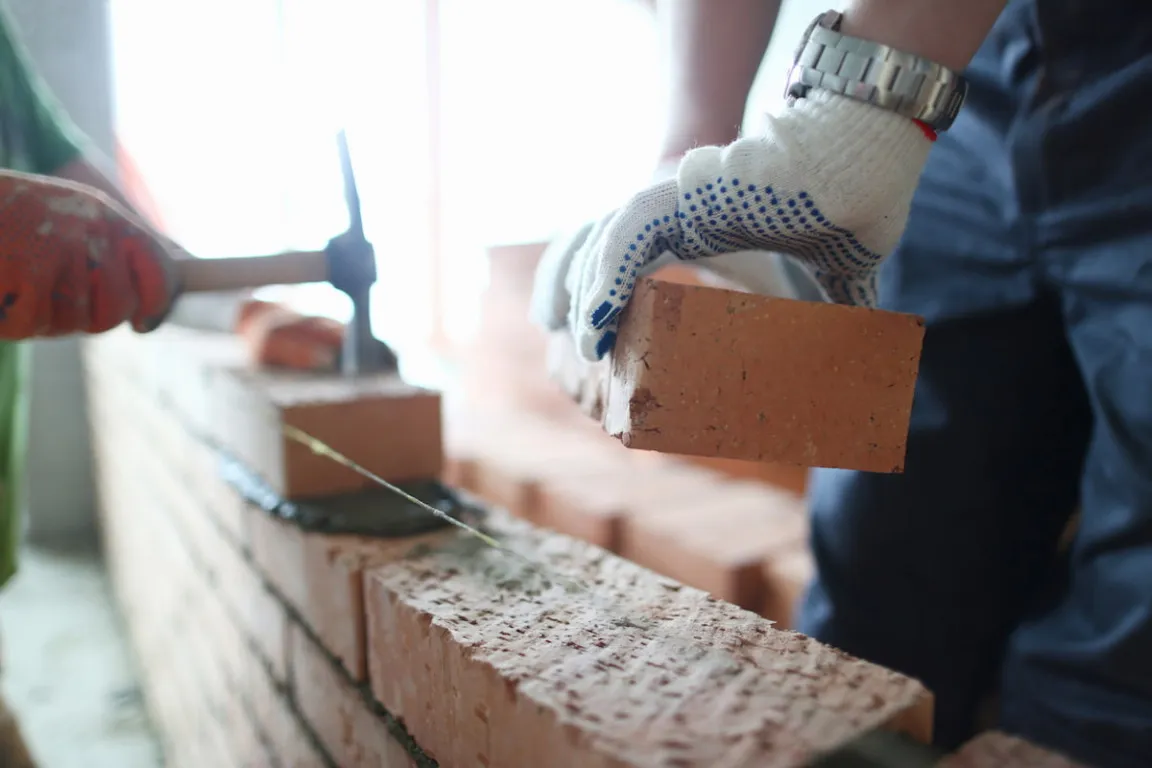Bricks are not only used as the main material in building houses, but they can also be decorative elements that enhance the appearance of a home. One type of brick that is in high demand is exposed brick.
As the name suggests, these bricks are installed without plaster or paint, revealing the natural and aesthetic appearance of the brick surface itself. Exposed bricks are suitable for various home concepts, from minimalist and industrial to Japandi.
In addition to enhancing the interior and exterior of a home, exposed bricks are also often used as visually appealing wall partitions. If you are interested in using them, check out the following detailed explanation of their functions, types, and advantages.
What Are Exposed Bricks?
Exposed bricks are a wall design style that reveals the brick surface directly without plastering, highlighting its original texture and color. These bricks serve as decorative elements both indoors and outdoors, giving a natural and artistic impression.
Exposed brick is arranged neatly, retaining its original color or given an additional touch of color so that the characteristics, texture, and shape of the brick become the main focus in the room. Popular in interior design, exposed brick is perfect for industrial, rustic, and Scandinavian-style homes.
Types of Exposed Bricks
Exposed bricks are available in various types that can be tailored to the design style and building requirements. Each type has its own characteristics in terms of material, color, and texture. Here are some commonly used types of exposed bricks.
1. Limestone Bricks
Limestone bricks are made from a mixture of sand and limestone, thus creating a smoother texture. These bricks are available in a variety of colors and are more water-resistant than other types of bricks. The Installation is also more efficient because it does not require a lot of mortar.
2. Speckled Clay Bricks
Speckled clay bricks are decorative bricks made from solid clay. These bricks have a soft and smooth texture with uneven colors and blackish tones resulting from the firing process. This combination is suitable for homes, restaurants, or cafes that want to create a classic feel.
Read also: How to Create an Aesthetic Industrial Wall & Design Ideas
3. KWD Bricks
KWD bricks are a popular type of exposed brick made from semi-solid clay, but still highlight natural fibers for a bold and clear texture. Unlike terracotta or mottled clay bricks, KWD bricks do not have as smooth pores.
Although more affordable, these bricks still give an elegant feel, making them a favorite choice for cafes, restaurants, and offices. For a different look, you can choose the white color variant.
4. Terracotta Bricks
Terracotta bricks offer a classic design with the smoothest texture and highly precise shapes, making them the most expensive type of exposed brick. They are characterized by their striking red color, which brings out an elegant impression, although they are also available in natural colors.
These bricks are in high demand because their finishing is so easy, and they tend to be more durable and long-lasting. Terracotta bricks are often used in the design of restaurants, cafes, or homes with a classic and unique style.
The Advantages of Exposed Bricks
Exposed bricks offer various advantages that make them an attractive choice for your home. Here are some of their advantages.
1. Soundproofing
Due to their dense and contoured shape, exposed bricks are effective at blocking sound from outside and inside the room, making them suitable for homes that prioritize acoustic comfort.
2. Cost-Effective
Using exposed bricks can significantly reduce the cost of building or renovating a house. You do not need to spend extra money on cement or wall paint, so you can allocate your budget for other purposes.
3. Extreme Weather Resistant
Exposed brick is known for its durability and remains safe to use even when exposed to extreme weather. However, it is still recommended to check its condition regularly to maintain its appearance and quality.
Read also: 11 Low-Budget Industrial House Design: Aesthetic & Stylish
4. Making Rooms Cooler
In addition to their aesthetic value, exposed bricks can also make rooms feel cooler. These unplastered walls are believed to release trapped heat from inside the room, plus they can absorb heat.
The Disadvantages of Exposed Bricks
Despite their many advantages, exposed bricks also have several disadvantages that need to be considered before you choose to use them. Here are some of the disadvantages of exposed bricks.
1. Requires Special Care
The maintenance of exposed bricks is different from plastered and painted walls. This material requires special care to prevent moss and mold, especially on the exterior, which tends to be more expensive than the interior.
2. Complex Installation
Installing exposed brick is quite complex because it must be done neatly and precisely, so it usually requires professional expertise. In addition, the combination of colors and shapes of the house also needs to be considered to get maximum results.
3. Difficult to Decorate
One of the disadvantages of exposed brick is that they are difficult to decorate. The uneven surface of the brick makes it difficult to attach wallpaper or hang other wall accessories compared to ordinary walls.
4. Prone to Cracking and Dusty
Although they look sturdy, exposed brick walls are prone to cracking and becoming dusty. Invisible cracks can affect air quality and the respiratory health of occupants, especially if applied indoors.
Tips for Maintaining Exposed Bricks
Maintaining exposed bricks is easy and simple, as long as it is done regularly. This maintenance involves three main steps, namely cleaning, patching, and protection. Here is the explanation:
- Cleaning stage: Clean dust and dirt from the surface of the bricks with a bristle brush, a solution of warm water mixed with detergent, and a cloth. Scrub, wet, let it sit for a while, then dry.
- Repair stage: Repair any cracks or gaps in the exposed brick immediately to prevent further damage. Simply fill the gaps or cracks with mortar or exposed brick adhesive.
- Protection stage: Protect exposed brick by applying a suitable sealer coating. This coating will help prevent cracking and moss growth, while keeping the exposed brick looking fresh and new.
That is the complete explanation of exposed brick, from its function and types to its advantages in enhancing the home design. The use of exposed brick can be an interesting and aesthetic solution, while also strengthening the structure of a building, both for interiors and exteriors.
To achieve optimal and long-lasting results, it is important to choose high-quality building materials, including during brick installation. One highly recommended product is Semen Merah Putih Watershield.
With water repellent technology, Semen Merah Putih Watershield provides triple protection from external, internal, and even ground water seepage. This product also makes bricks work more sturdy, low-maintenance, and durable, making it suitable for various applications, such as foundations, plastering, rendering, and exposed brickwork.
Are you planning to build a house with exposed brickwork? If so, make sure you choose high-quality cement.
Contact us for more information about Semen Merah Putih's premium products and bring your dream home to life with strong, aesthetically pleasing, and durable construction results.
Read also: Industrial Bathroom Ideas and Tips for Decorating Them



